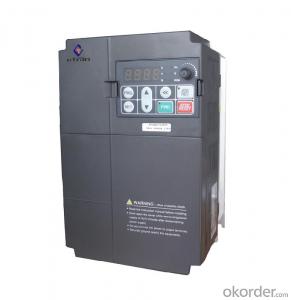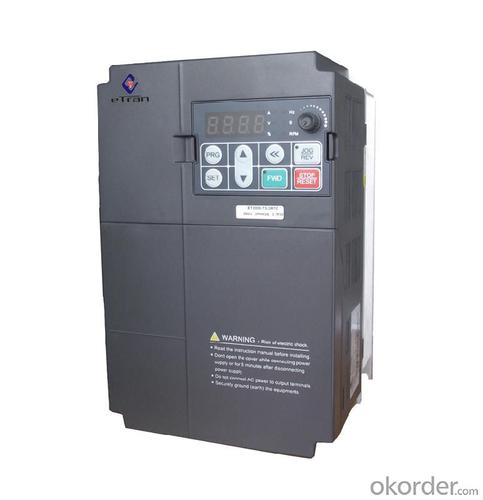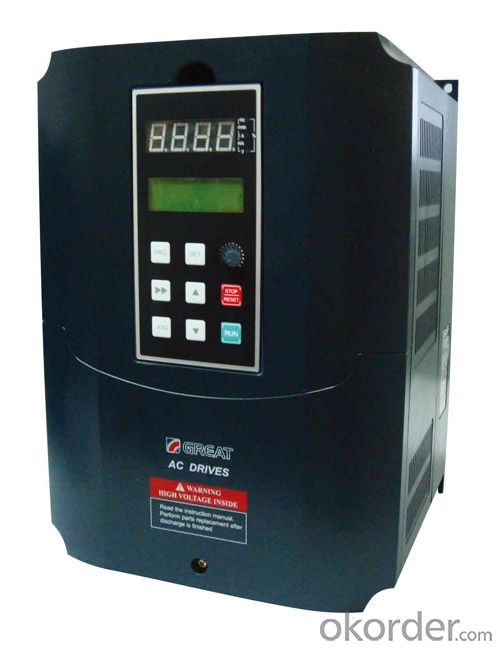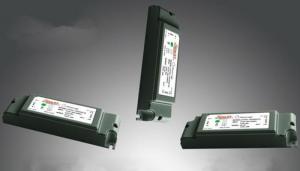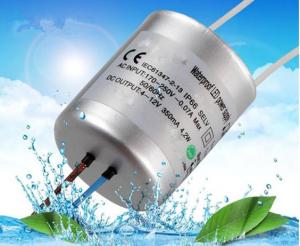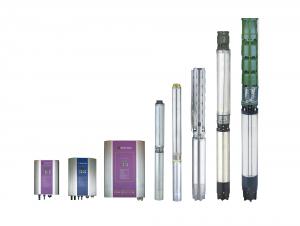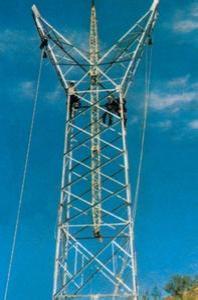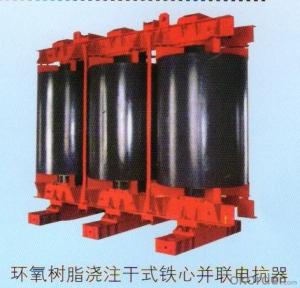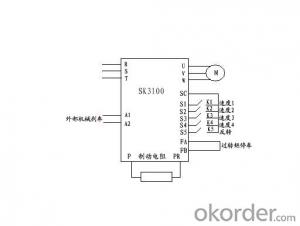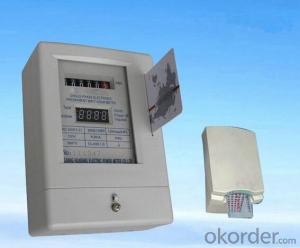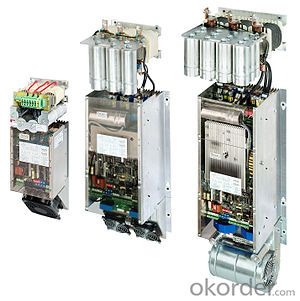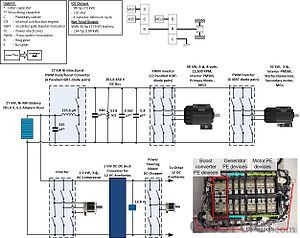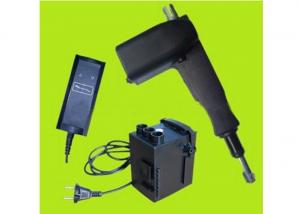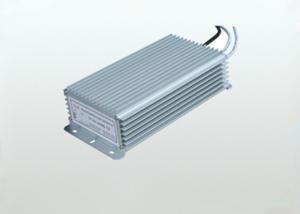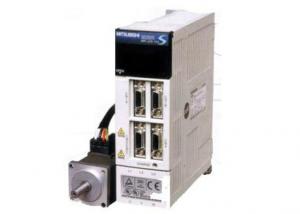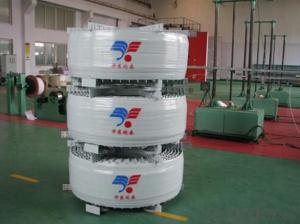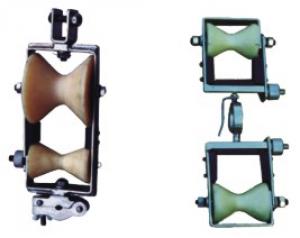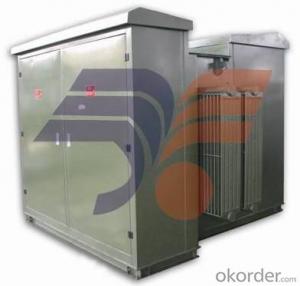HAI YAN Variable-frequency drive-lx2000-01
- Loading Port:
- Ningbo
- Payment Terms:
- TT OR LC
- Min Order Qty:
- 1 unit
- Supply Capability:
- 10 unit/month
OKorder Service Pledge
OKorder Financial Service
You Might Also Like
AC line harmonics
It is also possible to replace the standard diode-bridge rectifier with a bi-directional IGBT switching device bridge mirroring the standard inverter which uses IGBT switching device output to the motor. Such rectifiers are referred to by various designations including active infeed converter (AIC), active rectifier, IGBT supply unit (ISU), active front end (AFE), or four-quadrant operation. With PWM control and a suitable input reactor, an AFE's AC line current waveform can be nearly sinusoidal. AFE inherently regenerates energy in four-quadrant mode from the DC side to the AC grid. Thus, no braking resistor is needed, and the efficiency of the drive is improved if the drive is frequently required to brake the motor.
Two other harmonics mitigation techniques exploit use of passive or active filters connected to a common bus with at least one VFD branch load on the bus. Passive filters involve the design of one or more low-pass LC filter traps, each trap being tuned as required to a harmonic frequency (5th, 7th, 11th, 13th, . . . kq+/-1, where k=integer, q=pulse number of converter).
It is very common practice for power companies or their customers to impose harmonic distortion limits based on IEC or IEEE standards. For example, IEEE Standard 519 limits at the customer's connection point call for the maximum individual frequency voltage harmonic to be no more than 3% of the fundamental and call for the voltage total harmonic distortion (THD) to be no more than 5% for a general AC power supply system.
Long-lead effects
The carrier-frequency pulsed output voltage of a PWM VFD causes rapid rise times in these pulses, the transmission line effects of which must be considered. Since the transmission-line impedance of the cable and motor are different, pulses tend to reflect back from the motor terminals into the cable. The resulting voltages can produce overvoltages equal to twice the DC bus voltage or up to 3.1 times the rated line voltage for long cable runs, putting high stress on the cable and motor windings, and eventual insulation failure. Note that standards for three-phase motors rated 230 V or less adequately protect against such long-lead overvoltages. On 460 V or 575 V systems and inverters with 3rd-generation 0.1-microsecond-rise-time IGBTs, the maximum recommended cable distance between VFD and motor is about 50 m or 150 feet. Solutions to overvoltages caused by long lead lengths include minimizing cable distance, lowering carrier frequency, installing dV/dt filters, using inverter-duty-rated motors (that are rated 600 V to withstand pulse trains with rise time less than or equal to 0.1 microsecond, of 1,600 V peak magnitude), and installing LCR low-pass sine wave filters. Regarding lowering of carrier frequency, note that audible noise is noticeably increased for carrier frequencies less than about 6 kHz and is most noticeable at about 3 kHz. Note also that selection of optimum PWM carrier frequency for AC drives involves balancing noise, heat, motor insulation stress, common-mode voltage-induced motor bearing current damage, smooth motor operation, and other factors. Further harmonics attenuation can be obtained by using an LCR low-pass sine wave filter or dV/dt filter.
Dynamic braking
See also: Dynamic braking and Regenerative braking
Torque generated by the drive causes the induction motor to run at synchronous speed less the slip. If the load drives the motor faster than synchronous speed, the motor acts as a generator, converting mechanical power back to electrical power. This power is returned to the drive's DC link element (capacitor or reactor). A DC-link-connected electronic power switch or braking DC chopper controls dissipation of this power as heat in a set of resistors. Cooling fans may be used to prevent resistor overheating.
Dynamic braking wastes braking energy by transforming it to heat. By contrast, regenerative drives recover braking energy by injecting this energy into the AC line. The capital cost of regenerative drives is, however, relatively high.
Regenerative drives
Line regenerative variable frequency drives, showing capacitors (top cylinders) and inductors attached, which filter the regenerated power.
Simplified Drive Schematic for a Popular EHV
Regenerative AC drives have the capacity to recover the braking energy of a load moving faster than the designated motor speed (an overhauling load) and return it to the power system.
Cycloconverter, Scherbius, matrix, CSI, and LCI drives inherently allow return of energy from the load to the line, while voltage-source inverters require an additional converter to return energy to the supply.
Regeneration is useful in VFDs only where the value of the recovered energy is large compared to the extra cost of a regenerative system, and if the system requires frequent braking and starting. Regenerative VFDs are widely used where speed control of overhauling loads is required.
Some examples:
Conveyor belt drives for manufacturing, which stop every few minutes. While stopped, parts are assembled correctly; once that is done, the belt moves on.
A crane, where the hoist motor stops and reverses frequently, and braking is required to slow the load during lowering.
Plug-in and hybrid electric vehicles of all types
- Q: I just moved into an apartment building that apparently has a chronic problem with power surges. The power tends to go on and off several times a week, for no apparent reason. I know I need to buy power surge protectors for all my equipment, but I don't know what type. I've seen surge protectors (multi-plugs) that say 875 joules, 1,045 joules, and so on, but I don't know how to translate that in terms of equipmentFor example, I have a TV, DVD Videocassette player, and high-quality music equiment all plugged into a multi-plug in the living room. Should I buy a multi-plug power surge protector for this area, and what energy requirement should that surge protector have if I'm going to plug all that equipment onto it? What type of a power surge should I buy for my computer? What about the fridge? Air conditioner? Remember, I'm probably going to need to put power surge protectors all over the place, so which would be best for the different types of equipment in a home?Thanks!!!
- If you have access to your electrical panel i.e in the apartment you may want to see if a whole house system could be installed the run around $200 US plus installation. If you can not do this, start with brand research and get specialized units designed for each type of component. Make sure the manufacturer includes a lifetime connected equipment warranty if they should fail.
- Q: Equipment Used in the house.Room in the house___________Equipmenta. bathroomb. kitchenc. living roomd. bedroomgive the Equipment of room in the house
- Bathroom - hairdryer, curling iron, straightener, electric toothbrush, Waterpik Bedroom - lamps, radio, nighlight, aquarium, computer, television Dining Room - Lighting Kitchen - Refrigerator, microwave, stove/oven, mixer, food processor, toaster Living Room - Computer, television, vacuum, DVD, VCR, Dish/Cable, Stereo Laundry - Washer, Dryer, Iron Hope that helps!
- Q: By non related I mean like not a minor in another engineering or computer science. I was thinking about possibly business. What do you think would be the best minor that would give me a better salary/job opportunity?
- Business would be good for engineers. I majored in business and the hardest part was the math. Being an engineering major you would probably enjoy business. However, if I were you I would save the business degree for the day you decide to get your masters. You will get more out of it as an MBA degree. Why don't you minor in applied math? Since you already have all of those math classes under you belt. If you are a guy looking to meet girls you could minor in psychology, sociology, or communications. This is where all of the girls are. However, you would probably be writing more than you are used to in Engineering. I minored in Sociology and the classes were very interesting. I also found the classes to be very easy as well (if you like to read and write papers that is). It will boost your overall GPA. Also, these type of classes revolve around discussions from the reading and is more socially interactive. This may provide the balance that you are missing from the engineering classes. Minoring in English would also be beneficial for engineers. You know once you start working as an engineer you will be writing reports. I work with a lot of engineers and have found that they are very bright. However, they lack communciation skills and writing skills. So if you are looking to stand out of the crowd you should hone in on your writing and communication skills while in college. Most engineer managers have excellent writing and communication skills.
- Q: If it is, why?
- it is not. that is why there is test equipment that does just that (measure earth resistance). resistance is function of resistivity, area of the corsssection and length of the medium. due sheer size of the electrodes placed in ground we can achieve large contact surface. undergroud water and minerals also reduce resistance. different applications may requre that earth resistance is below some limit. if the limit is small value, grounding will be big job and cost a lot. many new buildings have metal strips placed along foundations (to get large contact surface). dry soil is less conductive and values can vary quite a bit.
- Q: A. Identify only the primary source of electrical energy for the equipment or circuits in question.B. Enable backup energy sources, such as generators and batteriesC. Make sure all workers are safe and accounted for before equipment and circuits are unlocked and turned back onD. Avoid testing equipment and circuitry to ensure they are de-energized
- The answer is B. Enable backup energy sources, such as generators and batteries to properly lockout and tagout electrical equipment and machinery. Hope this helps! A good website for you if you do electronic testing is Caltest which supplies all kinds of electronic test equipment. :) caltest .uk/
- Q: ???I recently went into a century tel building and was VERY interested. Does that have anything to do with what an electrical intrumentation technician does? If not please explain to me the difference between some one that is an electrical instrumentation technician would do, and what someone that works at century tel would do. I know this is a lot but Im planning for a major, and after that a career.Thanks!!!
- Ammeter,volt meter,power meter or watt meter,protective relays all these are electrical instruments. Technician repair,install,test, calibrate such equipments But instrument technician electrical is different.He repair, test calibrate pressure gauges, temperature gauges,Level gauges,Flow meters,Process control instruments all working on electrical priniple.
- Q: I sold a small bit of electrical equipment to a guy in Norway - I'm in the UK.Item became faulty after a month - I said I would refund him but I had spent the cash already and couldn't repay him back in one go. Item was returned.He agreed that I could pay it up ?899 over 4 years as I'm just a student and not working full time. It was sent in his currency and ?899Trouble is he is now claiming I've not just to pay ?899 back but the amount is to be much more in GBP's as the pound as got weaker against his currency although he stated he wouldn't add any interest on. Any advice?
- Well it isn't your fault that the currency is more or less. Do you have anything in writing? You may want to check what laws are on the books but he can't just change the price on you
- Q: I have heard from a lot of people about the greatness of an EE degree but never got the chance to ask why? So what is so cool about an electrical engineering degree that makes it better than the other engineering degrees out there?
- I've got a Electrical Engineering Diploma. I work in the electrical field. I'd be a Graphic Designer.
- Q: give formulas and explanation both
- The input, output and efficiency relationships are the same. In one case we are talking about a mechanical system and in the other it's an electrical system.
- Q: I hateTummy, supper, baggie, materials, equipment, fix used in making food, supplies, ointment
- i really appreciate you fixing supper for my tummy, but i need to pick up some supplies including ointment, building materials and electrical equipment so could you please put it in a baggie.
Send your message to us
HAI YAN Variable-frequency drive-lx2000-01
- Loading Port:
- Ningbo
- Payment Terms:
- TT OR LC
- Min Order Qty:
- 1 unit
- Supply Capability:
- 10 unit/month
OKorder Service Pledge
OKorder Financial Service
Similar products
Hot products
Hot Searches
